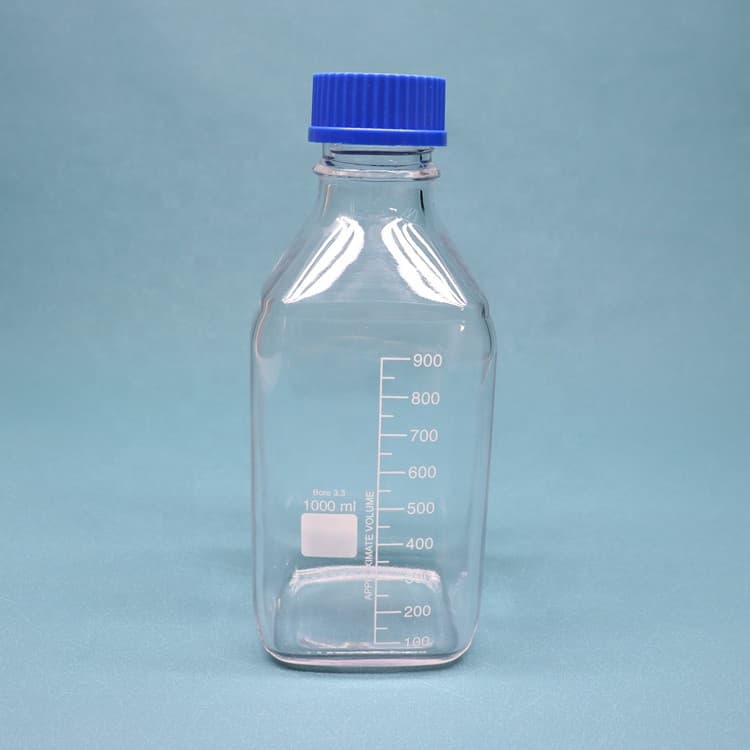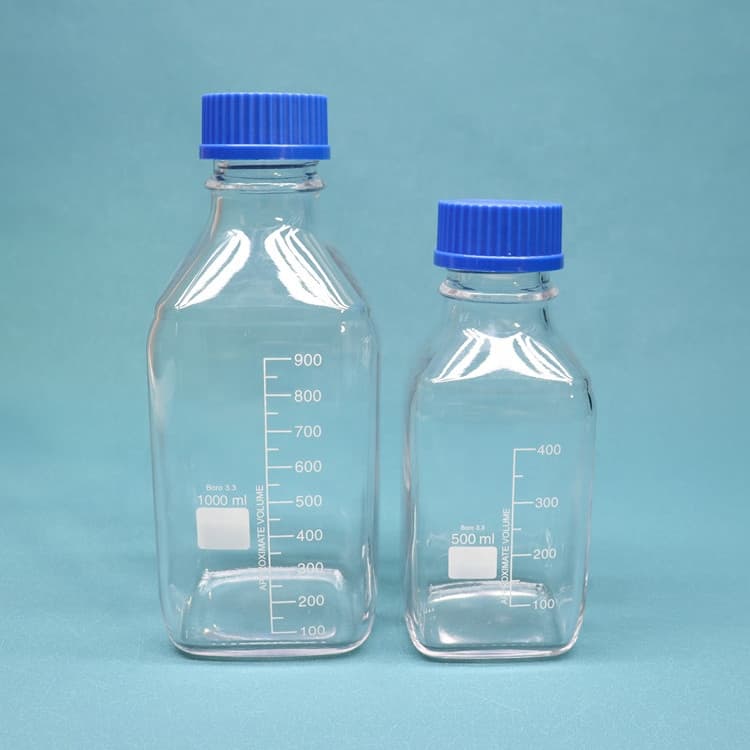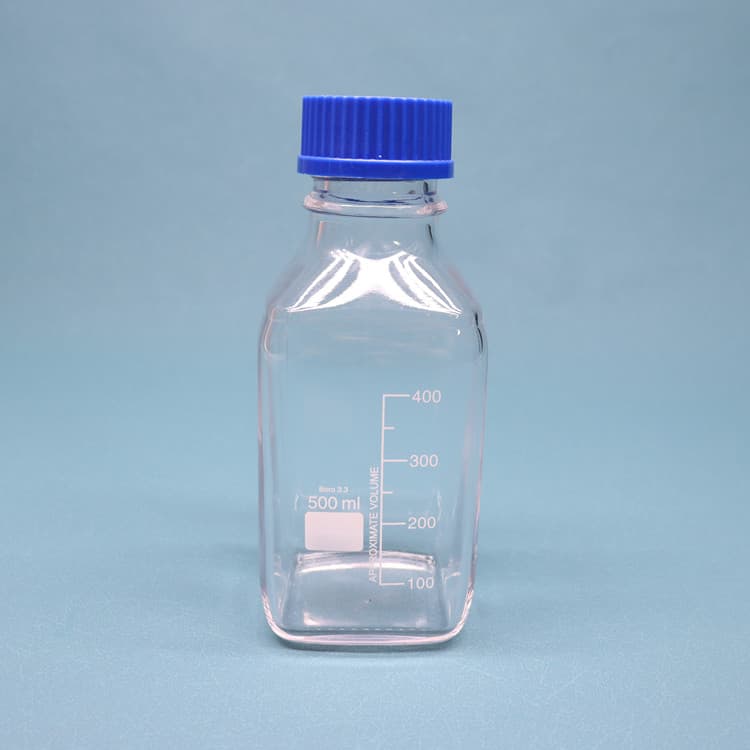



The Reagent Bottles, also known as media bottles, are used to store chemicals in liquid or powder form. They are generally made up of glass or plastic. Payment Method We offer direct buying from this site or you can request for a
Reagent bottles, also known as media bottles or graduated bottles, are containers made of glass, plastic, borosilicate or related substances, and topped by special caps or stoppers. They are
Borosilicate Glass Clear Reagent Bottle Blue Screw lid Lab Storage Bottle $1.20-$2.20 / piece 500.0 pieces (Min. Order) CN Yancheng Xinboyuan Glass Co., Ltd. 7YRS 4.8 ( 4) | "Good service" Contact Supplier 1 / 6 Laboratory wide Mouth GL45 screw top 500ml Transparent Amber autoclavable glass Reagent Bottle Media Storage bottle for sale $0.86-$1.86
500mL (16.9oz) Glass Reagent Bottle with Acid Proof Polypropylene Stopper, Borosilicate 3.3 Glass - Eisco Labs. CH0160E.
Wide-neck reagent bottle - The reagent bottle with UN approval for bulk goods is particularly suited for storing, packing, taking Narrow-neck reagent bottle - Universal bottles for storing, packing, taking samples, sampling and transport of liquids. Cost-effective square bottle for packing and storing of liquids, powders and granules.
Plastic media bottles are commonly known as reagent bottles or graduated laboratory bottles as they have graduations for measurement readings along the body of the bottle. Typical applications of plastic reagent bottles include storing, mixing and sampling in the lab and science industries as a suitable alternative to glass bottles.
Kautex™ HDPE Wide Neck Square Bottles are versatile and available in natural and white with a wide range of sizes. 17. Buerkle™ HDPE Wide Neck Square Reagent Bottles. The Wide-neck reagent bottle is particularly suited for storing, packing, taking samples, sampling and transport of granules and paste-like media. 18.
The Reagent Bottles, also known as media bottles, are used to store chemicals in liquid or powder form. They are generally made up of glass or plastic. The first Reagent Bottles were manufactured by DURAN in the year 1972 and
Bottles. The high-quality glass and plastic bottles are chemically and biologically inert. This allows even volatile organic substances or non-hazardous chemicals to be contained for an extended time period. Plastic bottles are flexible and perform well for squeezing functions, at low temperatures, or when unbreakable instruments are preferable.
High Density Polyethylene (HDPE) Bottles. Nalgene high density polyethylene bottles are our most popular lab bottles by virtue of their leakproof* performance, compatibility with a wide range of lab reagents, impact resistance down to -100°C, and lower cost than many other materials. High density polyethylene bottles provide very good chemical
Square Bottles. Nalgene square bottles come in a variety of formats and materials to accommodate a wide range of application needs. Their square shape saves shelf and counter space compared with round bottles of the same volume. The wide-mouth designs are easier to fill and are recommended for solid, semi-solid and viscous liquid materials.
The Pyrex ® screwcap graduated reagent bottles are manufactured to comply with ISO 4796-1 and are supplied with a black SVL ® PBT screwcap that can be hot air sterilised up to 180oC. The WHEATON ® screwcap reagent bottles are also graduated and have a phenolic screwcap. Reagent bottles manufactured from both borosilicate and soda-lime glass
Hplc Reagent Bottle Cap By National Analytical Corporation 5000 INR Get latest price MOQ: 1 Piece Supply Ability: 5-10 Per Month Delivery Time: 6-8 Week National Analytical Corporation Mumbai, India Kesarkunj, Room No. 9, 2nd Floor, Vasanji Lalji Road, Kandivali Station Road, Kandivali (West), 10 Years Member Since : 10 Years Company Video
Reagent bottles, also known as media bottles or graduated bottles, are containers made of glass, plastic, borosilicate or related substances, and topped by special caps or stoppers. They are intended to contain chemicals in liquid or powder form for laboratories and stored in cabinets or on shelves. Some reagent bottles are tinted amber (actinic), brown or red to protect light-sensitive chemic